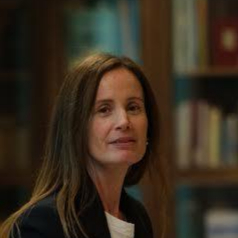
צילום: דינה גונה
בית ביאליק | מוזאון, ארכיון ומרכז תרבות
בית ביאליק – ביתו של המשורר הלאומי חיים נחמן ביאליק – ששופץ על ידי עיריית תל אביב-יפו בשנת 2023 לציון מאה שנים להקמת הבית, הינו חלק ממתחם ביאליק המהווה מתחם תרבות עברית וישראלית ונמצא בחלקה של העיר שהוכרז על ידי אונסק"ו כאתר מורשת תרבות עולמית.
בית ביאליק תוכנן על ידי האדריכל יוסף מינור ונבנה עם הגעתו של חיים נחמן ביאליק לארץ ישראל בשנת 1924, תוך מעורבתו המלאה של המשורר בתכנון הבית ובעיצובו. הבית דמוי הטירה נחשב לאחד הבתים המרכזיים בפניה התרבותיים וההיסטוריים של תל-אביב והיישוב העברי בארץ. מבנהו האדריכלי המרהיב, עיצוב פנים הבית, התאמת הצבעים המוקפדת והגן שטיפח המשורר במו ידיו, האצילו על סביבתם מעין תחושה ממלכתית היאה למקום משכנו של המשורר הלאומי.
לאחר מותו בשנת 1934 נפתח הבית ליום אחד בשנה – יום פטירתו.
ב1937 העבירה מאניה ביאליק, רעייתו של המשורר, את הבית לרשות עיריית תל-אביב. הבית שימש כמשכן ל'אגודת בית ביאליק' בהשתתפות נציגי העירייה ואגודת הסופרים, על מנת להפוך למרכז תרבותי פתוח לציבור. ככזה, התגבש הבית לכדי מוזאון לזכר ח.נ ביאליק, ארכיון וספריית עיון לתלמידים, כש-3500 הספרים בספרייתו הועמדו לרשות הציבור.
המנהל הראשון שנבחר לנהל את הבית הוא הסופר משה הללס שהיה חבר קרוב של ביאליק עוד מימי קישינב ואודסה. בשנת 1939 התמנה משה אונגרפלד למנהל הספרייה והארכיון.
במהלך שנות השמונים התמנה יונתן דובוסרסקי למנהל הבית וכיהן במרוצת חמש-עשרה השנים הבאות. במסגרת כהונתו, שינה בית ביאליק את פניו. ברוח התפיסה המוזאלית של שנות השמונים, עבר המוזאון שיפוץ משמעותי בו הודגש ביאליק המשורר הלאומי על חשבון ביאליק האדם הפרטי. בתוך כך, חדר השינה, חדרי השירותים והמטבח הוחלפו לתצוגות ומשרדים, הבית נצבע בצבעים בהירים ועל חזיתו הותז שפריץ אפרפר.
בשנת 2000, תחת כהונתו של ראש העיר רון חולדאי, התמנתה האמנית איילת ביתן-שלונסקי כאוצרת ראשית ומנהלת מתחם ביאליק. בשנים אלו עבר המוזאון עבודת שיקום ושחזור מהיסוד, במטרה להשיב עטרה ליושנה ולהחזיר את הבית אל פניו המקוריים, תוך נאמנות לבחירותיו של ביאליק. את עבודת השיקום ועיצוב התצוגה החדשה הובילה אדריכלית השימור פרופ' ניצה מצגר-סמוק ותוכן התצוגה נכתב על-ידי שמואל אבנרי, אחראי ארכיון בית ביאליק. בתוך כך, נחשפו הצבעים המקוריים העזים של קירות הבית – כחול, ירוק ואדום – שהיו מכוסים עד כה, על עיטוריהם הייחודיים. כמו כן, שוקמו הרהיטים המקוריים של הזוג ביאליק ויצירות האמנות שרכשו בחייהם וכן הוכפל חלל הארכיון והותקנו בו מערכות מתקדמות לשימור המסמכים יקרי הערך: כתבי יד נדירים, קטעי שירים, סיפורים, מאמרים, נאומים, תעודות ועוד.
תצוגת הקבע החדשה השתלבה עם הסגנון הייחודי של הבית והאירה את דיוקנו של המשורר הלאומי בכל עושר מעגלי יצירתו ופועליו התרבותיים והחברתיים.
לראשונה חשף בית ביאליק את ריבוי מפעלותיו של המשורר כמנהיג ומורה דרך, פרשן וחוקר, מכנס אוצר התרבות היהודית, מסאי ונואם, עורך, מתרגם, מוציא לאור ומחייה הלשון העברית. התוצאה יוצאת הדופן שהפגישה בעוצמה בין מזרח ומערב, שימשה לא רק צוהר לרוחו של ביאליק, אלא גם חלון ראוה לרוח האסתטית המיוחדת של תחילת המאה העשרים בארץ ישראל: בנייה אקלקטית בעלת עיטורים אוריינטליים לצד אירופאים: קשתות, מגדל, כיפה, אח, רצפות מצוירות ועוד – שנתנו ביטוי מוחשי לתפישתו התרבותית של המשורר.
מאז ועד היום משמש בית ביאליק כמוזאון, ארכיון ומרכז תרבות, המקיים פעילויות ואירועים לקהל הרחב.
בית ביאליק הינו אחד מחמשת בתי התרבות המהווים את מתחם התרבות בכיכר ביאליק המתחדשת.
Beit Bialik - the home of the national poet Haim Nachman Bialik - is one of the five houses that make up Bialik Square for Hebrew and Israeli Culture.The Museum underwent renovation by the Municipality of Tel Aviv-Jaffa in 2023 to honor the centennial of the house’s establishment and located in a part of the city declared by UNESCO as a world cultural heritage site.
The house was designed by the architect Yosef Minor and built upon the arrival of Haim Nachman Bialik in Israel in 1924, with the poet's full involvement in the planning and design of the house. The castle-like structure is considered to be one of the central houses in Tel-Aviv culturally and historically and the Jewish settlement in the country. The house was partly opened to the public, inviting it to come and meet the poet and enjoy his art collection. Some of them met him by chance, as he was tending the garden he loved so much.
After the poet's death in 1934, the house was opened to the public only once a year, on the anniversary of his passing. In 1937, Mania Bialik, the poet's widow, transferred ownership of the house to the Tel Aviv municipality. The house was used as a residence for the 'Beit Bialik Association' with the participation of representatives of the municipality and the Association of Writers, in order to become a cultural center open to the public. As such, the house became a museum in memory of Bialik, an archive and a reference library for students, with the collection of 3500 books in its library made available to the public. The first manager chosen to run the house was the writer Moshe Helles, who was a close friend of Bialik since the days of Chisinau and Odessa. In 1939, Moshe Ungerfeld was appointed director of the library and archive.
During the 1980s, Yonatan Duboserski was appointed director of the house and served in that role for the next fifteen years. As part of his tenure, the Bialik House changed its face. At the time, the house underwent a significant renovation that emphasized the national concept that the museum promoted.Those aspects of Bialik's life were emphasized, as opposed to his private life. Therefore the bedroom, the bathrooms and the kitchen were changed to display spaces and offices, the house was painted in bright colors and its facade was splashed with a grayish splash.
In 2000, under the tenure of Mayor Ron Huldai, the artist Ayelet Bitan-Shalonsky was appointed as chief curator and manager of the Bialik Square. During these years, the museum underwent restoration and reconstruction work, with the purpose of returning it to its former glory and original appearance, while remaining faithful to Bialik's personal choices. The restoration work and the design of the new display was led by conservation architect Prof. Nitza Metzger-Smock and the content of the display was written by Shmuel Avneri, head of the Beit Bialik Archives. In the process, the bright original colors of the house's walls - blue, green and red - were revealed, which had been covered until then, with their unique decorations. In addition, the original furniture of the Bialik’s and the works of art they acquired in their lifetime were restored, and the space of the archive was doubled and advanced systems were installed to preserve the valuable documents: rare manuscripts, fragments of poems, stories, articles, speeches, certificates and more. The new permanent display integrated with the unique style of the house and illuminated the portrait of the national poet in all the richness of his creative circles and cultural and social works.
The extraordinary crossroad between East and West, not only providing a glance into Bialik's spirit, but also into the special aesthetic of the beginning of the 20th century in the Land of Israel: an eclectic construction with oriental and European decorations: arches, a tower, a dome, a fireplace, painted floors and more - which gave tangible expression to the poet's cultural perception.
Ever since the museum is promoting exposure and access to the many works of the poet: leader and spiritual guide, commentator and researcher, convener of Jewish Culture, essayist and speaker, editor, translator, publisher and reviver of the Hebrew language.
Nowadays Bialik House is a museum, archive and cultural center, which holds activities and events for the general public. Recently, the archive of the house was opened and you can get a personal impression of the poet's writings.
אנשי קשר







